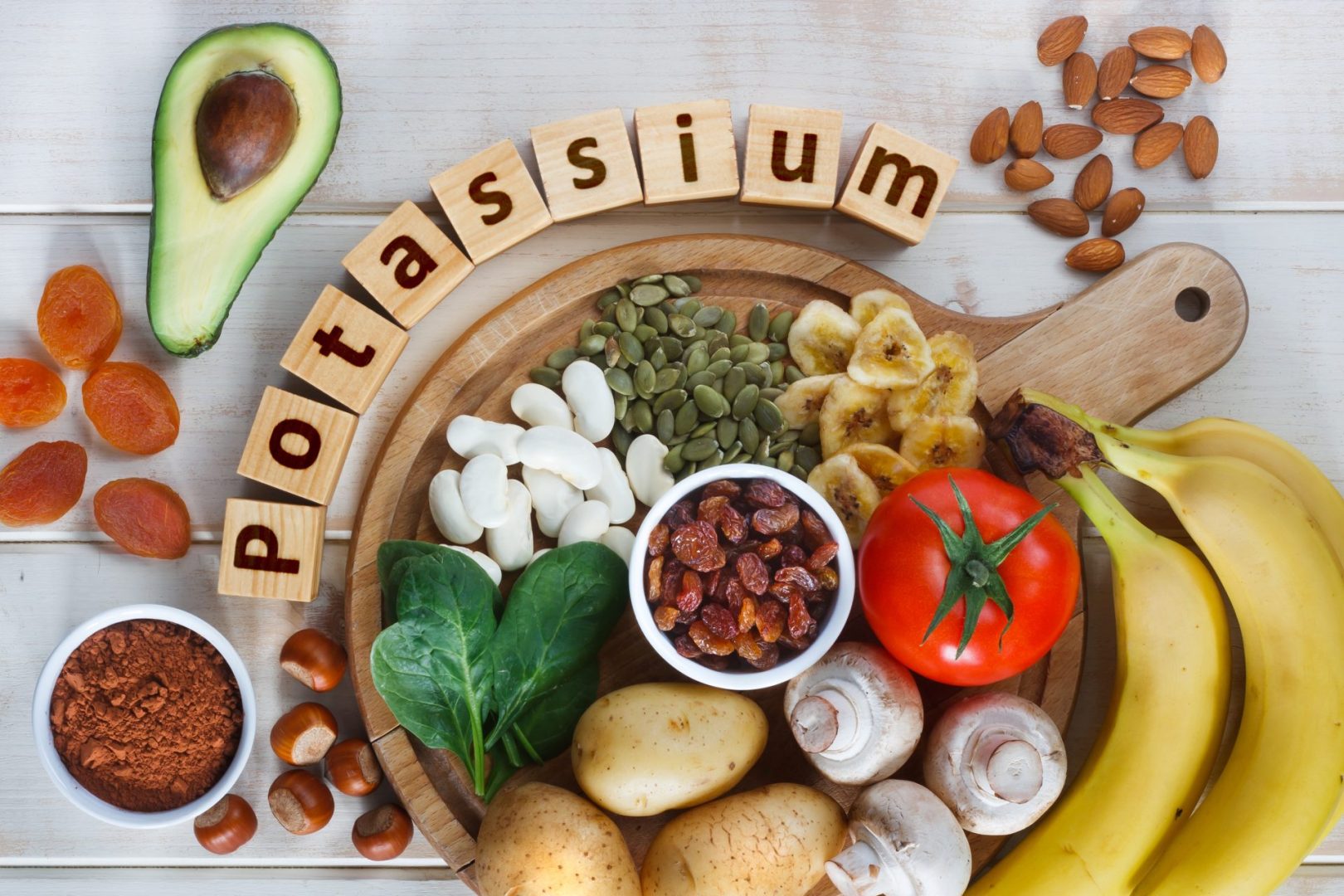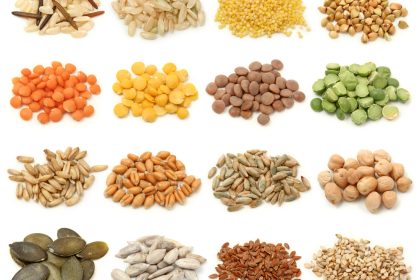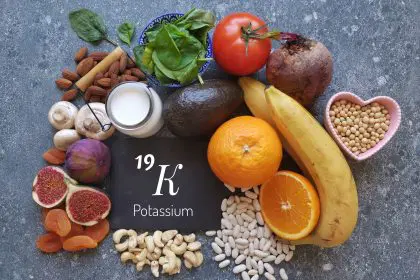New research reveals how this common element outperforms traditional advice for managing hypertension
For decades, the standard recommendation for managing high blood pressure has centered around reducing sodium intake. While limiting salt remains important, emerging research suggests a different dietary approach might deliver even more impressive results. The key lies not in what you eliminate from your diet, but rather what you add to it.
This groundbreaking shift in understanding heart health focuses on potassium – a mineral found abundantly in many whole foods but chronically under-consumed by most Americans. The latest findings indicate that increasing potassium intake may actually be more effective for blood pressure management than merely cutting back on salt, offering new hope for the millions struggling with hypertension.
The revelation comes at a critical time, as cardiovascular disease remains the leading cause of death worldwide. With approximately 116 million American adults experiencing high blood pressure – nearly half the adult population – finding more effective dietary strategies has never been more urgent. This potassium-focused approach represents a rare win-win scenario: a natural, food-based intervention that complements existing treatments while potentially delivering superior results.
How potassium transforms blood pressure management
The blood pressure-lowering effects of potassium work through multiple physiological pathways that directly counteract the mechanisms by which sodium raises blood pressure. This mineral helps the body eliminate excess sodium through urine while also relaxing blood vessel walls and reducing the resistance that forces the heart to work harder.
Mathematical modeling of the renal and cardiovascular systems demonstrates that increasing dietary potassium consistently lowers blood pressure regardless of sodium intake levels. This suggests that even individuals who find it challenging to reduce their salt consumption can experience significant blood pressure benefits by focusing on potassium-rich foods.
Perhaps most importantly, potassium’s effects appear cumulative and sustainable, creating lasting changes in cardiovascular function rather than the temporary improvements seen with some interventions. Regular consumption of potassium-rich foods helps maintain healthier blood pressure levels over time, potentially reducing reliance on medication for some individuals.
The protective effects extend beyond just blood pressure numbers. Adequate potassium intake has been linked to reduced risk of stroke, heart attack, and other cardiovascular events. This broader protection stems from potassium’s role in maintaining proper electrical signaling in the heart, supporting kidney function, and protecting blood vessel integrity.
Gender differences reveal personalized approaches
Fascinating gender distinctions emerge in how the body responds to increased potassium intake. Men typically experience more dramatic blood pressure reductions from adding potassium-rich foods compared to premenopausal women, highlighting how hormonal factors influence cardiovascular regulation.
For women, potassium becomes increasingly important after menopause, when natural estrogen decline removes certain cardiovascular protections. During this transition, women’s blood pressure response to potassium begins more closely resembling men’s patterns, making this mineral particularly crucial during middle age and beyond.
These gender variations underscore the importance of personalized nutritional approaches to heart health. While general guidelines provide a starting point, individual factors like age, hormonal status, and genetic predisposition all influence how effectively the body utilizes dietary potassium.
The findings also help explain why some individuals show minimal response to sodium restriction alone. Without adequate potassium to balance electrolyte systems, the body’s blood pressure regulation mechanisms cannot function optimally, regardless of how carefully someone monitors salt intake.
The ideal sodium-potassium ratio for optimal health
Rather than focusing exclusively on either sodium reduction or potassium increase, the most effective approach considers the balance between these two critical minerals. The human body evolved consuming approximately five times more potassium than sodium, yet modern diets have completely reversed this ratio.
Most Americans currently consume about 3,400 mg of sodium daily – far exceeding the recommended limit of 2,300 mg – while getting only about 2,500 mg of potassium, roughly half the recommended 4,700 mg. This inverted ratio creates the perfect conditions for hypertension development.
Working toward a potassium-to-sodium ratio of approximately 2:1 appears optimal for blood pressure management. Practically speaking, this means aiming for about 4,700 mg of potassium while limiting sodium to about 2,300 mg daily. For those with existing hypertension, medical professionals often recommend even lower sodium targets of 1,500 mg.
This balanced approach recognizes that both minerals play essential roles in bodily function. Sodium isn’t inherently harmful – it’s crucial for nerve function, fluid balance, and muscle contraction. The problem emerges when sodium intake greatly exceeds potassium consumption, disrupting the electrolyte balance that maintains healthy blood pressure.
Potassium-rich foods beyond bananas
While bananas have become synonymous with potassium, many other foods contain even higher concentrations of this vital mineral. Incorporating a variety of these potassium powerhouses creates a more sustainable approach to increasing intake while enhancing overall nutrition.
White potatoes often surprise people with their impressive potassium content – a medium baked potato with skin contains about 900 mg, nearly twice a banana’s potassium. Sweet potatoes offer a similarly potent dose while providing additional antioxidants and fiber.
Legumes represent another exceptional potassium source, with a cup of white beans delivering approximately 1,000 mg. Lentils, kidney beans, and chickpeas also make significant contributions while simultaneously providing plant protein and cholesterol-lowering fiber.
For potassium-rich fruits beyond bananas, look to apricots, oranges, and cantaloupe. Dried fruits like apricots and prunes offer particularly concentrated amounts, making them convenient options for quick potassium boosts. Just one cup of dried apricots contains nearly 2,000 mg – almost half the daily recommendation.
Leafy greens deserve special attention for their exceptional potassium-to-calorie ratio. Spinach provides about 840 mg per cooked cup, while Swiss chard offers around 960 mg. These versatile vegetables simultaneously deliver blood pressure-friendly magnesium, calcium, and nitrates.
Protein sources with notable potassium content include salmon (approximately 800 mg per 6-ounce serving), yogurt (about 580 mg per cup), and chicken (about 500 mg per breast). Incorporating these foods offers multiple nutritional benefits beyond potassium alone.
Practical strategies for increasing potassium intake
Successfully incorporating more potassium into daily eating patterns requires practical approaches that work within real-life constraints. Rather than attempting dramatic dietary overhauls, focus on gradual, sustainable changes that accumulate over time.
Start by identifying your current dietary patterns and looking for simple substitution opportunities. Replacing refined grains with potassium-rich alternatives makes a significant difference – choose a baked potato instead of white rice, or whole-grain pasta (which contains more potassium than refined varieties).
Strategic snacking presents another convenient opportunity to boost potassium intake. Keeping dried fruits, nuts, and yogurt accessible makes it easier to choose these potassium-rich options over typical low-potassium processed snacks. Even a small handful of dried apricots provides about 500 mg of potassium.
Meal preparation techniques can maximize the potassium content of foods. Cooking tomatoes into sauce concentrates their potassium, while using bean or sweet potato purees as bases for soups and stews adds potassium without significantly altering familiar flavors.
For those who frequently dine out, certain menu choices consistently offer higher potassium. Dishes featuring beans, leafy greens, or baked potatoes make reliable restaurant options. Most establishments willingly accommodate requests to substitute french fries with a baked potato or a side of greens – simple changes that dramatically boost the meal’s potassium content.
When increasing potassium intake, do so gradually, especially if your current consumption is low. Many potassium-rich foods also contain significant fiber, which can cause digestive discomfort if increased too quickly. A gradual approach allows your digestive system to adapt while still delivering cardiovascular benefits.
Important precautions for special populations
While most healthy adults benefit from increased dietary potassium, certain medical conditions require caution. People with chronic kidney disease often need to limit potassium intake, as compromised kidneys may struggle to remove excess potassium from the bloodstream.
Individuals taking certain medications should also consult healthcare providers before significantly increasing potassium consumption. Several common prescriptions affect potassium balance, including ACE inhibitors, angiotensin receptor blockers, and potassium-sparing diuretics. These medications can raise blood potassium levels, potentially creating risks when combined with dramatically increased dietary potassium.
Heart failure patients typically receive specific sodium and potassium guidelines tailored to their condition’s severity and treatment regimen. These personalized recommendations often differ from general population advice and should take precedence.
For those with normal kidney function not taking medications that affect potassium levels, obtaining this mineral from food sources remains extremely safe. The body efficiently eliminates excess potassium from natural foods, whereas supplements can potentially cause dangerous spikes in blood levels. This explains why health authorities consistently recommend food-based potassium rather than supplements.
The bigger picture: comprehensive heart health
While the potassium-sodium balance plays a crucial role in blood pressure regulation, true cardiovascular health emerges from a comprehensive approach encompassing multiple lifestyle factors. The potassium advantage works most effectively when combined with other heart-healthy practices.
Regular physical activity synergizes with potassium’s blood pressure-lowering effects. Exercise improves blood vessel elasticity and heart efficiency while potentially enhancing the body’s ability to regulate electrolyte balance. Even modest activity – 30 minutes of brisk walking most days – provides significant benefits when paired with potassium-rich eating patterns.
Stress management represents another critical component of comprehensive blood pressure control. Chronic stress triggers hormonal cascades that raise blood pressure and may interfere with potassium utilization. Incorporating relaxation techniques like deep breathing, meditation, or yoga creates a more receptive internal environment for potassium’s beneficial effects.
Adequate sleep quality and duration significantly impact blood pressure regulation systems. Poor sleep activates stress pathways that can counteract dietary interventions’ benefits. Prioritizing consistent, restful sleep enhances the effectiveness of potassium-focused dietary changes.
Alcohol moderation deserves attention when implementing any blood pressure management strategy. Excessive alcohol consumption can negate potassium’s positive effects by raising blood pressure and potentially depleting potassium stores. Limiting intake to moderate levels (one drink daily for women, two for men) supports overall cardiovascular health.
Transforming heart health one meal at a time
The potassium approach to blood pressure management represents a fundamental shift in how we conceptualize heart-healthy eating. Rather than focusing predominantly on restriction, this strategy emphasizes abundance – adding delicious, nutrient-dense foods that actively support cardiovascular health.
This positive framing helps overcome the psychological barriers often associated with dietary changes. Instead of dwelling on what you can’t have, the potassium-focused approach celebrates the diverse, flavorful foods you can enjoy while simultaneously supporting heart health.
The strategy aligns perfectly with broader nutrition recommendations, as the foods highest in potassium – fruits, vegetables, legumes, and whole grains – also deliver a spectrum of other beneficial compounds that support overall health. This creates a compounding effect where dietary improvements simultaneously address multiple aspects of wellness.
Perhaps most importantly, this approach empowers individuals with a proactive strategy for blood pressure management. Rather than feeling at the mercy of genetic predispositions or medication requirements, people can take meaningful daily actions to support their cardiovascular systems through food choices.
By understanding and implementing this potassium-centered approach, you gain access to one of the most powerful dietary strategies for blood pressure control. This simple shift – focusing on adding potassium-rich foods rather than just limiting sodium – may transform your heart health journey, potentially offering greater benefits than traditional advice alone could provide.
















